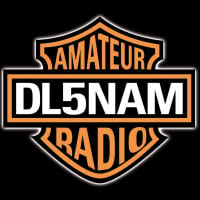Welcome to the FlexRadio Community! Please review the new Community Rules and other important new Community information on the Message Board.
Need the latest SmartSDR or 4O3A Genius Product Software?
SmartSDR v4.1.3 | SmartSDR v4.1.3 Release Notes
SmartSDR v3.10.15 | SmartSDR v3.10.15 Release Notes
The latest 4O3A Genius Product Software and Firmware
SmartSDR v4.1.3 | SmartSDR v4.1.3 Release Notes
SmartSDR v3.10.15 | SmartSDR v3.10.15 Release Notes
The latest 4O3A Genius Product Software and Firmware
If you are having a problem, please refer to the product documentation or check the Help Center for known solutions.
Need technical support from FlexRadio? It's as simple as Creating a HelpDesk ticket.
Need technical support from FlexRadio? It's as simple as Creating a HelpDesk ticket.
SPE/Flex 6xxx drive control
Comments
-
upssss:

0 -
On the 40M - 160M bands I operate with non resonant long wire antennas. On the primary operating frequencies most times the SWR is below 3:1. Will creep above that with wind and ice.
0 -
"With the internal ATU, the amplifier is able to overcome mismatches up to 5:1"
is from the Rev. 2.0 Second series manual.
0 -
I had a look at the output waveform of my 6500, and there were absolutely no evidence of any overshoot. Very very nice envelope. Still I lost a BLF188 for no reason. Now it can be a lot of thins causing this, but one have to remember the gates are very fagile and the protection has to act in nanoseconds rather than milliseconds. One half period of RF may be enough to **** the transistor.
0 -
OK. No mention of de-rates with the higher feedline SWR? Then it must have been the Elecraft that had the de-rate requirement if subjecting the internal tuner to a high feedline SWR.
Imagine putting your SWR meter between your internal tuner and the antenna feedline, NOT the usual placement, between the internal tuner and the amp (SWR shown on your SPE Panel). The restriction I spoke of is for the SWR the tuner sees, not what the amp sees.
In my case and antennas, the tuner can see an SWR greater than 5, so I selected a Palstar HF external tuner, instead of the internal tuners available with the SPE and Elecraft amps. I was concerned about derates and high voltages with my particular antenna situation. Others will have a different use case.
The Palstar Tuner is built like a "tank".....but slow...! If you need to change bands quickly, the Palstar Tuner is not a good choice.
My amp never sees an SWR greater than 1.25:1.
Alan
WA9WUD1 -
The 2KFA built-in tuner will clean up any reasonable resonant antenna be it dipole , triband yagi or vertical. All of my antennas tune across the band. One exception is of course 80m. 80 is separated between two, HF2V 3.5 - 3.65990 and a double bazooka I made about 26 years ago covers from 3.600 - 4.0mhz. Once set up it is smooth and instantly tuned to the preset. I am feeding freq data via USB from the Flex with a FTDI chipset converter cable to a transition cable I made up (DB9 to DB15). I might add that I have not experienced any of the powe spike anomalies being mentioned. Got to be something else going on I am thinking. My Acom 1000 is the quickest and smoothest tuning manual tune amp I have ever owned but the 2KFA is REALLY nice. Instant on is great.1
-
Set the Flex to 12 watts max power on the Transmit General screen. Several more overdrive events were recorded, while Txing on 40M.0
-
When that happens do you notice any quivering or motion on the SSDR power output meter?0
-
Operating with the 6600M as a standalone, no SSDR.0
-
No further info from SPE about overdrive errors with SWR at the high end of their spec. I have acquired a Palstar HF Auto from a fellow ham for test purposes. Disabling the SPE AT the Palstar matches my 40 thru 160 antennas FB. The time to search for a tuning solution is about the same. With this configuration so far no overdrive errors.0
-
Anyone know what value can protect from overshoots if this really is the issue? 50 ms enough? I have blown 4 LDMOS and never found what caused it, so want to be very conservative... I am driving an 6600M. Andy KU7T0
-
My expert 1.5k has blown 2 ldmos chips. Both replaced under warranty. I have 2 other amps that I run with my flex 6600 besides the expert Amp. No problems with those amps blowing. I have spoken with other hams that have blown their expert amps and they aren't running flex radio's, so not a flex radio problem. I put my expert amplifier on the scope and it was not linear, so that's a major issue. If you own an expert amplifier, I would suggest checking your amplifier and not running it until it is aligned properly. On air reports with the expert amplifier were terrible. Switched to the ACOM and unsolicited reports were great. I too have numerous overdrive warnings on the expert amp, but its never been over 1500 watts. According to my lp700 it won't do 1500w, but that's another story. My expert amplifier is back in the shop for the 3rd time.....probably in Italy this time. Not happy at all with expert amplifier. Not willing to sell it either because I wouldn't feel right passing on this amplifier to another ham.....Not my style. Expert needs to make this right and refrain from putting the blame on other radio manufacturers and operators! Even if my expert 1.5k amplifier could run over 1500 watts on a real power meter (which it can't), the software is suppose to catch this and shut off without damaging the ldmos chip. Additionally the chip is rated to 1.8k, so barring an 1800w plus key down the chips should not be blowing. Like I stated earlier my lp700 station monitor has never seen 1500 watts with this amplifier. Waiting for my PGXL to be built.
As a side note, I have my flex timing set to 30ms but I believe the expert manual says 10ms is good enough.....but check. I've never seen my flex radios flash higher like the icom problem on key down, but you can over drive the flex power higher than your original drive setting by over driving with your speech. Setting the delay won't fix this. You have to learn which words or syllables you are saying louder and learn to regulate those or just set the drive back so it doesn't occur. I have my flex drive set so my amplifiers are at least 100w to 200w back from the peak on low, mid, and high settings while on SSB, but you'll be even lower when you go to CW or Digital......c'est la vie.
1 -
My Expert 1.5k has blown its LDMOS chip after 6 weeks of ownership. I also own and have owned a fault free 1.3k for 3 years so I know my way around the SPE. Not at any time did I exceed the maximum stated input power but I did get 3 'phantom' excess input warnings in those 6 weeks. At the failure there were no warnings and the amp was at less than 1KW in the MID position. It is now back in Italy and a depressing fight to assert my rights and get it repaired under warranty has started. I shall be standing my ground. I do not believe it correct, as Mark says, to blame the Flex.1
-
I have been reading the post regarding the drive issue. I own a SPE 2K-FA so the trend seems to be that the 1.5 has a problem. My comments tend to be more towards the philosophy of how the SPE amps are driven. And it is simple, setting drive power from the driver end is not a good idea. Using the SPE supplied SW is the best methodology to use. As it allows the amps power sensing to measure the power including PeP. The app allows setting the limit that is fed back to the Flex (as the driver) allowing real time limiting of the drive. When I set this value (in real time) from the SPE SW , I do it int he mode that I will be using. I set the drive as I modulate to the point that gives me the out put I want, and never exceeding max value. In fact I run conservatively. This is not another form of ALC, but will limit at the set point as seen from the amp point of view. This is important in that setting the drive from the driver side will and can cause overdriven condition, that will may or may not be captured by the amps protection. In the case of the 1.5, there may be a problem with this and more the reason to use the recommended procedure and SW.0
-
After corresponding with the US SPE dealer and with input from Italy as well I learned the overdrive faults are not caused by the 6600M after all.
From SPE Italy...
"when the amplifier sees the SWR jump (greater than 1.7:1), immediately switches to MID without any alarm in the log. But the driving power previously set for MAX may be too much for the MID position, then the OD alarm".
At my QTH a 1.7:1+ SWR spike is very possible since my 80M/160M inverted Vs are 260' long and supported by 110' poplar trees, which move around a lot in the wind. This along with wet conditions does not help matters.
From SPE Italy...
With SWR 3.0, the maximum power handled by the antennas is greatly reduced respect to the factory declared value.
The customer can try to lower the driving power when use the amplifier on the edges of the
band.
With the 40M monoband antenna the bottom of the phone band is where the SWR is near the limits of the SPE 1.5K. Caused by coupling with the 80M array, it is what it is.
In summary the amp is FB if connected to a dummy load, but to my antennas not so much.
0 -
A nearby ham confirmed the nonlinear condition after numerous reports of splatter.
He does not run the legal limit because his amp is unable to output that much.
The exciter is a late model Apache Anan. Pure signal is not operational at this time.0 -
When my 2k faults and falls back to mid, because the Amp is controlling the flex out put and that output was previously set to a proper level, there is no overdrive problem. Getting the amp set up properly using it’s available tools is the safest way to go. Not trying to fault you or Flex or even the amp. But proper operational insight is necessary for safe and reliable operation.0
-
The low, mid and high power settings are set exactly according to the SPE manual.
Apparently when it trips on high SWR the drive remains high momentarily, when in the mid setting. SPEs position is if the SWR never went high this would not be an issue.
More on this from SPE...
The protection "attack time" was greatly increased to help improve the protection of the amplifier.
0 -
Not all the time. We calibrate the PAs of the 6400/6600 series radios to produce 100W at 45C. If the PA is cold, the PA can (and usually does) emit more than 100W when the power slider is at 100%. You can see this in action easily by using an external wattmeter or observing the RF power output meter in SmartSDR. The correct way to think of the power slider is relative to that calibration. It is not a precision power setting.0
-
My amp provides maximum rated power on 160 with just 2 watts while 3 watts generates more output than the amp is rated for. That 1 watt makes a big difference.
How can I be certain that my 6700 will consistently provide 2 watts to my amp? I don't care what the slider says. I'm talking about 2 actual stable watts coming out of the radio.
0 -
In the case of the 1.5 it could be not enough.... no protection system is perfect. For a lot of reasons.0
-
Pat, the low input power requirement of your amplifier complicates the issue you describe. There is no SmartSDR setting that assures two "stable" watts directly from your 6700.
The least complicated solution is to employ a 50-ohm attenuator between your radio and the amp. The attenuator would need to be able to handle 100W and be PTT aware (switch in for transmitting and out for receive). Ideally, you would calculate the attenuation value to provide your amplifier the drive it needs for full output power when the SmartSDR level control is at 100. This would allow small excursions of output power from the 6700 to be far less impactful to the output of your amp. Bird sells such attenuators, but you would still need to add an outboard TR switch.
The second (and more complicated) solution is adding small gain stage to amplify transverter level outputs of your 6700 to a level that matches the input power requirement of the amplifier. It too would need to be PTT aware and you would need to select the transverter output for TX in a SmartSDR slice.
Best,
Dan0 -
Let me see if I understand you correctly.
Are you saying that there is no way for a user to specify and achieve an accurate and consistent power output from the Flex 6700? Is that correct?
0 -
That is correct.0
-
Well then, that might be the cause of my amp's blown finals. I had to pay over $200 for repairs + shipping and wait 3 months to get that amp fixed at DX Engineering.
Now I can no longer depend on any power settings in SSDR to be accurate. That's just great! I see more blown finals in my future.
0 -
Add an attenuator as Dan suggests and you'll be good to go. There will be much less variation, percentagewise, at the output of the attenuator. For example, a 25:1 divider will give you about 4 watts when the slider is set to full scale and the 2 watts you need will be easy to achieve at about mid-scale.0
-
That's right. And some amp's use this solution; using a ATT with 13dB, can change to 16dB or if a QRP TRX is used to any lower value like 3 or 10dB0
-
That's the down side of owning an amp that can't handle even a 1 watt change before blowing up. Bad design.
0 -
Agreed.
Perhaps it's a good match for a QRP radio but I can't imagine it being safe to use with a 100 watt output transmitter. Maintaining an output at 1% to 2% of maximum output seems an engineering challenge.0 -
Since the LDMOS was replaced I have been operating with the SPE AT disabled on 40 80 and 160M, using a Palstar HF Auto instead. No further overdrive errors BUT today on 160M, while hitting the Flex 6600M tune button, there was a flash from the SPE, an arcing sound and then the Italian smoke leaked out. Heading back to SPE US for round 2.0
Leave a Comment
Categories
- All Categories
- 382 Community Topics
- 2.1K New Ideas
- 632 The Flea Market
- 8.3K Software
- 123 SmartSDR+
- 6.4K SmartSDR for Windows
- 185 SmartSDR for Maestro and M models
- 430 SmartSDR for Mac
- 272 SmartSDR for iOS
- 259 SmartSDR CAT
- 195 DAX
- 382 SmartSDR API
- 9.3K Radios and Accessories
- 40 Aurora
- 265 FLEX-8000 Signature Series
- 7.2K FLEX-6000 Signature Series
- 952 Maestro
- 56 FlexControl
- 866 FLEX Series (Legacy) Radios
- 927 Genius Products
- 464 Power Genius XL Amplifier
- 338 Tuner Genius XL
- 125 Antenna Genius
- 297 Shack Infrastructure
- 209 Networking
- 460 Remote Operation (SmartLink)
- 144 Contesting
- 788 Peripherals & Station Integration
- 139 Amateur Radio Interests
- 1K Third-Party Software







